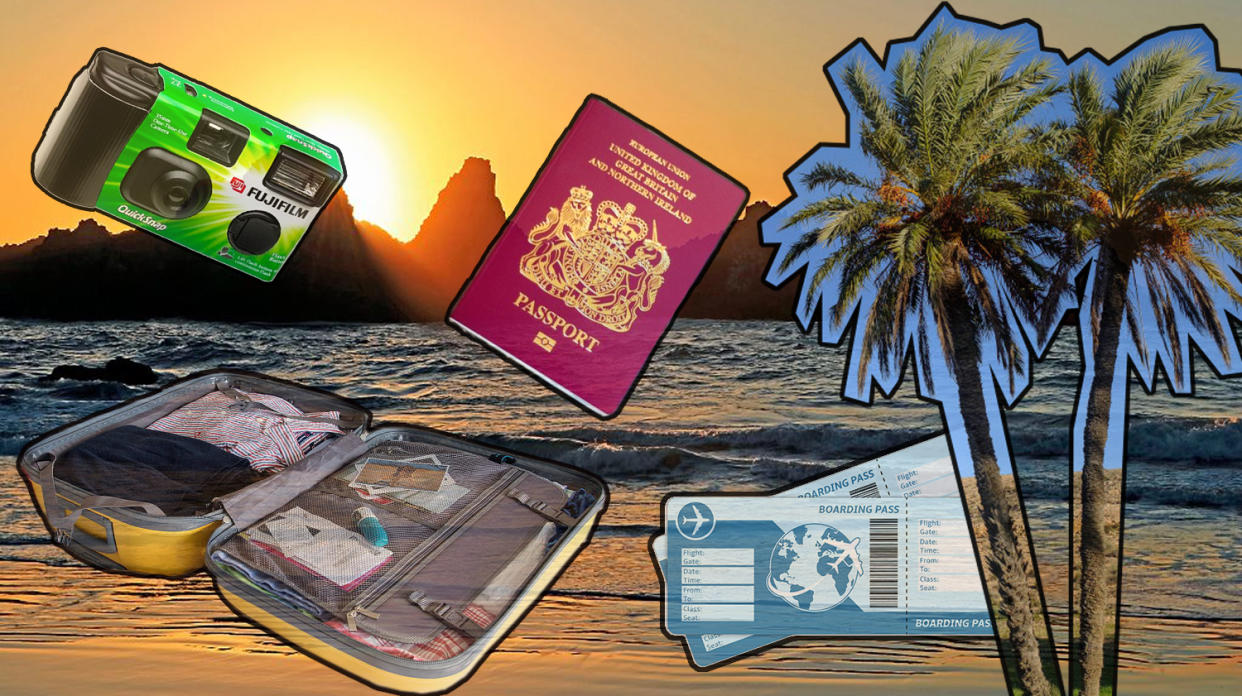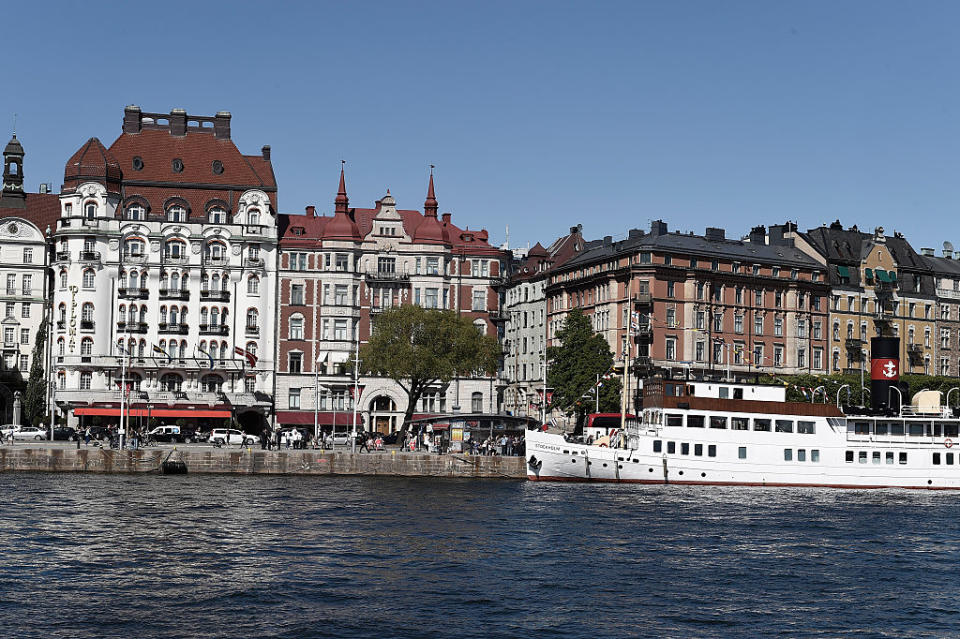How to find the best cheap flight deals

A rise of budget airlines and an increasingly-large population of international travellers has made flying no longer a well-timed luxury.
EasyJet, Ryanair and a whole host of foreign carriers have re-shaped the idea of jetting off from something booked a year in advance to something that can almost be arranged there and then.
This week, for example, it would still be possible to fly from London to France for just £15 – cheaper than a travelcard around Britain’s overpriced capital city.
These are all of the tips you need to get the same bargains.
Use comparison websites
Rather than trawling through Easyjet, Ryanair and the rest one at a time, use a flight comparison website like Icarus Cheap Flights, Skyscanner or Kayak to find the best deals a lot faster. These sites take into account your dates, airport preference and whether you’re open to stop-offs, and compare hundreds of companies at once.
Then, instead of booking directly through the comparison site (which can sometimes charge you extra for doing the hard work) both of these sites will re-direct you to the individual airline’s website, where you can book your tickets as usual.
Skyscanner also has a feature where it will show you the cheapest time of the month to fly and will also tell you the price difference of the flight a few days either side of your dates.

Be flexible with dates
Flying on a Friday or returning on a Sunday tends to be a lot pricier than flying midweek. If your dates aren’t dead set, aim to fly on a Tuesday or Thursday, when prices can be much lower. However, if your dates can’t be changed and you have to fly out on a Friday, try and make your return flight a weekday, as flights returning to the UK tend to be at their cheapest.
Generally, flights returning to the UK are cheaper than those leaving it, which can give you more budget for your outbound journey if you can find an especially good return price.
But consider last-minute deals too
Flight prices might be extortionate a few days before take-off, but it’s still easy to get some good deals only two or three weeks before you’re due to go. If you’ve got holiday to use up or an unexpected period of freedom for a quick break then don’t rule out a trip abroad. If you’re looking for a cheap, last-minute break, then consider signing up to airline newsletters now. Often, especially in the case of charter flights, the airline will be looking to fill spare seats and the newsletter is the first place they’ll advertise them.
Leave from and return to different airports
If you live relatively close to a few airports, consider flying out of one and back into a different one. Flights leaving from London Luton and London Stansted are often cheaper than Heathrow or Gatwick, which serve more airlines and have a far busier schedule. But flying back into one of the bigger airports can save you a lot of money if you can grab a good deal.

Use budget airlines
British Airways and Thomson might offer more comfort for your flight, but if it’s only a few hours long then using a cheaper airline won’t show many differences but will save a lot. A lot of the mark-up from more expensive carriers comes from the entertainment and meals provided, but the differences are minimal.
For example, Ryanair and British Airways both offer 30 inches of legroom with a seat width of 17 inches, compared to EasyJet’s 29 and 18 inches respectively. Although British Airways offers an included meal on long-haul flights, it scrapped the privilege on short-hauls a year ago.
Many choose to avoid the likes of Ryanair and EasyJet on the basis of their customer service and costly admin fees if you need to change any details. They also charge more for baggage, unlike BA, which includes a checked bag in the price of the ticket.

It’s also worth checking out local budget airlines, which may not fly as frequently to the UK but can offer great deals. For example, Spanish airline Vueling runs cheap flights between the UK and Spain, Prague’s ‘Smart Wings’ gives customers a free check-in bag for each leg of the journey, and flying with Tap Air Portugal will give you a free lunch.
Consider further out airports
Big cities around the world often have more than one airport to ease congestion. Whereas flying into the ‘main’ airport can cost a fortune, flying slightly further out can save a lot of money for the rest of your trip. Instead of flying into New York’s JFK airport, fly into Newark. If you’re going to Berlin, avoid Tegal and fly into Schönefeld. For Barcelona, consider Girona airport, for Stockholm, try Skavsta instead of Arlanda, and for Warsaw in Poland, try Modlin instead of Chopin.
Bear in mind you’ll often have to get a transfer to the city centre with most of these airports. Many have been created to act purely as a budget landing spot, which means more often than not, they’re based in the middle of nowhere. But many local companies have latched onto this, which means transfers are often cheap and incredibly easy.
However, if your break only spans a couple of days, weigh up whether it’s worthwhile just to pay the extra for the time you’ll save.

Keep an eye out for error fares
Error fares are a risk that can pay off, but they are a risk nonetheless. An ‘error fare’ occurs when an airline accidentally sets the wrong price for a flight, but the transaction still goes through. Certain websites like Holiday Pirates dedicate themselves to spotting these cheap deals and promoting them, and ‘liking’ them on Facebook is an easy way to get notifications without actively searching deals out yourself.
But be careful with error fares, because companies can choose to cancel the transaction. If you manage to book one, it’s worth checking with the airline that they’ll honour the price they’ve accidentally set, before booking accommodation or the rest of your trip.
Robert Burgess, of HeadforPoints.com, told ThisIsMoney.co.uk: ‘General contract law applies to fare mistakes, in the same way that it applies to a price mistake on the Tesco website or anywhere else. Even if you place an order for an incorrectly priced product, the company involved has the right to rescind it as long as a reasonable person should have realised it was a mistake.’
Take carry-on luggage
For a short break, it’s definitely worthwhile skipping the hold luggage to save time and money. With prices starting at £20 each leg, it can end up costing the same amount for the bag as it does for the passenger. Most airlines have very similar dimensions for their carry-on bag size, which makes it easy to prepare in advance. Generally, the dimensions allowed are 56 cm x 45 cm x 25 cm, but make sure to check on the airline’s website before heading off to the airport.

Some airlines are more generous than others, and make sure to check frequently to be sure regulations haven’t changed. For example, EasyJet allows customers one carry-on bag only, whereas (until recently) Ryanair allowed one carry-on bag and one smaller bag, like a handbag. However, Ryanair has recently changed its rules and customers are now only allowed a smaller ‘small’ bag (35x20x20cm) unless they purchase priority. The second, larger bag will be put in the hold for free.
International carriers can sometimes offer entirely different rules, like Wizzair. Its standard hand luggage bag size used to be ‘handbag only’ with a €10 upgrade for customers who wanted to bring a ‘standard’ size bag onboard with them. Those who didn’t check the rules (which have recently changed to follow airline norms) would face a fine of €30+ upwards once they tried to board.
Book at the right time
Long-haul flights are thought to be cheapest two to four months in advance. Short-hauls and mid-hauls can vary depending on the country you’re leaving for. If you know you’re flying in peak season (during the school summer holiday, Easter break or around Christmas) then book as far in advance as you can. If you’re flying off-peak, then it can be worth waiting and watching prices fluctuate. Signing up to Google Flights will send you email announcements whenever your route changes price (gratifying if you’ve booked and it’s gone up, not so much if you’ve been waiting for prices to fall), which can act as an easy way to learn the trends.
It’s also thought – although not proven – that booking flights on a Friday costs the most, whereas booking on Tuesday or Wednesday is the cheapest. Generally, the later you leave it to book, the more expensive the flight will become, so booking in advance when possible is often the most stress-free option.

Sign up to flight websites to get vouchers
Companies like Norwegian Air and Vueling occasionally send out vouchers to customers, or give them ‘points’ that can be used to contribute towards flight costs. EasyJet and Ryanair don’t tend to follow suit, but will often email subscribers when prices drop or when a sale starts. Booking companies like eDreams, although sometimes more expensive to use than going direct, also send out vouchers frequently. It can be worth figuring out the difference in price between booking with a provider or directly, if the provider is offering you an upfront discount.
It should go without saying, but most of the time these vouchers are only valid for a certain period of time, which means they’re handy if you’re about to book a trip, but often come when you’ve only just returned.
Consider stop-off flights
The last thing you want to do when flying home is stop off somewhere for a few hours, but it’s an easy way to save money on a trip, and can even allow you to do a pitstop trip of another city if you’ve got time. Flying to the USA can be costly if you’re flying direct, but going with Icelandair (which, unsurprisingly, requires a stop-off in Iceland) can save a fortune. They have stop offs all over the USA, from New York to Orlando and Kansas, and are usually a lot cheaper than other providers. Icelandair’s stop-offs can be anything from a few hours to more than 24, giving you a chance to explore somewhere entirely different if you’d like to.

Similarly, Brussels Airlines offers cheap flights around Europe, with a stop-off in Brussels en route. This might seem like more hassle than it’s worth, but if you’re looking for a cheap deal then could be the option. A flight from Budapest to Manchester was almost £60 cheaper (with far more convenient times) with an hour’s stop off in Brussels – just enough time to grab a snack and take off again.
Usually, there’s no need to go through security or take your bags as it’ll be the same plane. However, be careful if your two-leg journey requires a ‘self-transfer’, which means you’re responsible for getting from one plane to the other and transporting your bags, too. These are more dangerous as if the first flight is delayed, the second might not wait.

 Yahoo News
Yahoo News 
